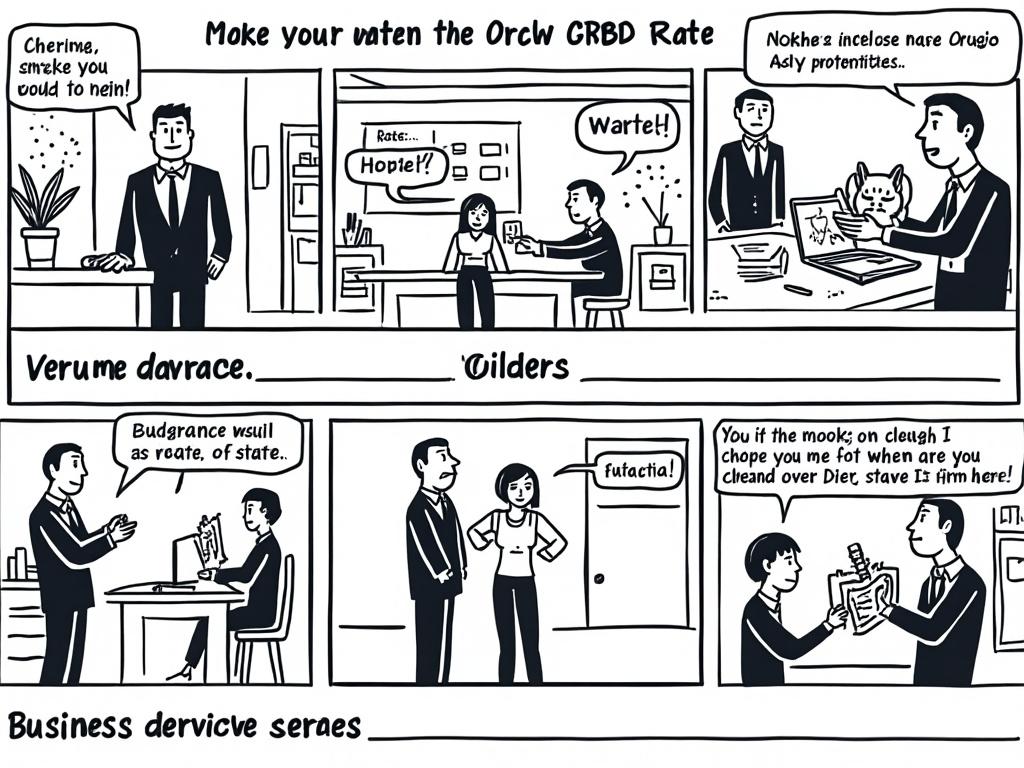
Optimizing Corporate Tax in Poland: Maximizing Allowable Deductions
Reading time: 12 minutes
Table of Contents
- Introduction to Corporate Tax Optimization in Poland
- Understanding Poland’s Corporate Tax Framework
- Key Allowable Deductions for Polish Businesses
- Strategic Tax Planning Approaches
- Real-World Case Studies
- Common Pitfalls and How to Avoid Them
- Recent Regulatory Changes and Their Impact
- Conclusion
- Frequently Asked Questions
Introduction to Corporate Tax Optimization in Poland
Feeling overwhelmed by Poland’s corporate tax landscape? You’re certainly not alone. For both established businesses and new market entrants, navigating the Polish tax system can feel like deciphering a complex puzzle with constantly changing pieces.
Poland’s corporate tax framework offers numerous opportunities for legitimate tax optimization through allowable deductions—but only if you know where to look and how to properly document your approach. The difference between strategic tax planning and haphazard guesswork can mean thousands or even millions of złoty to your bottom line.
Here’s the straight talk: Effective tax optimization in Poland isn’t about aggressive loopholes or questionable practices. It’s about methodical planning, meticulous documentation, and leveraging legitimate deductions that align with your business activities.
Understanding Poland’s Corporate Tax Framework
Before diving into specific deductions, let’s establish a foundational understanding of the Polish corporate tax system.
Current Tax Rates and Basic Structure
Poland currently maintains a standard corporate income tax (CIT) rate of 19%, with a preferential 9% rate available for small taxpayers with revenues below €2 million. This two-tier system aims to support smaller businesses while ensuring larger enterprises contribute proportionately to the national budget.
The taxation year in Poland typically follows the calendar year (January to December), though companies can apply for a different fiscal year if it better suits their operational cycle. Tax returns must be filed within three months after the end of the tax year, with monthly or quarterly advance payments required throughout the year.
The Legal Foundation of Deductions
The Polish Corporate Income Tax Act explicitly states that costs incurred to generate revenue or maintain/secure the source of revenue are generally deductible, provided they aren’t listed among statutory non-deductible items. This principle forms the cornerstone of all tax deduction strategies in Poland.
Professor Aleksandra Nowak of Warsaw School of Economics notes: “The key test for any business expense in Poland is whether it was genuinely incurred for business purposes and properly documented. Polish tax authorities are increasingly sophisticated in their analysis of business substance behind claimed deductions.”
Key Allowable Deductions for Polish Businesses
Let’s examine the major categories of deductions available to businesses operating in Poland, along with their practical implications.
Operating and Business-Related Expenses
Day-to-day business expenses form the foundation of most corporate tax deductions in Poland. These include:
- Employee compensation – Salaries, bonuses, and benefits (with certain limitations)
- Rental and real estate costs – Office space, warehouses, and related fees
- Business travel – Domestic and international travel for business purposes
- Utilities and telecommunication – Electricity, heating, internet, and phone services
- Office supplies and equipment – Materials necessary for daily operations
Pro Tip: While these expenses are generally deductible, they must be properly documented with invoices that comply with Polish VAT regulations. Informal receipts or incomplete documentation can lead to rejected deductions during tax audits.
Depreciation and Amortization
Assets with a useful life exceeding one year must be depreciated rather than expensed immediately. Poland’s tax law provides specific depreciation rates based on asset categories:
- Buildings and structures: 1.5% – 10% annually
- Machinery and equipment: 7% – 25% annually
- Computers and digital equipment: up to 30% annually
- Vehicles: generally 20% annually (with limitations for passenger cars)
- Intangible assets: varying rates based on expected useful life
Quick Scenario: A manufacturing company purchases machinery worth 500,000 PLN. Using the standard 14% depreciation rate, they can deduct 70,000 PLN annually, reducing their taxable income by that amount each year over the asset’s depreciable life.
Research and Development Incentives
Poland offers particularly generous incentives for research and development activities. Since 2018, the R&D tax relief system allows for a “super deduction” where qualifying expenses can be deducted twice—once as a normal business expense and again as an additional R&D deduction.
For standard businesses, this can mean deducting up to 100% of eligible costs twice. For recognized research and development centers, this benefit increases to 150% of eligible costs.
Eligible R&D expenses include:
- Salaries and social security costs for employees conducting R&D work
- Materials and supplies directly used in R&D activities
- Expert opinions, consulting services related to R&D
- Equipment rental for R&D purposes
- Depreciation of equipment used in R&D activities
Strategic Tax Planning Approaches
Effective tax planning in Poland requires more than simply knowing which deductions exist—it demands strategic implementation and proper timing.
Timing Strategies for Maximum Benefit
Timing your expenses and income recognition can significantly impact your tax position:
- Year-end acceleration of expenses – Consider bringing forward deductible expenses planned for early next year if your current year’s profit is higher
- Deferral of revenue recognition – Where legally possible and aligned with accounting principles, consider strategies to recognize income in a more advantageous period
- Strategic asset acquisition – Purchasing depreciable assets before year-end can provide immediate depreciation benefits
Well, here’s the straight talk: These timing strategies must align with genuine business substance. Polish tax authorities increasingly scrutinize transactions that appear motivated primarily by tax advantages rather than business needs.
Documentation Requirements
The Polish tax system places significant emphasis on proper documentation. For deductions to be accepted, you’ll need:
- Properly structured invoices that comply with Polish VAT regulations
- Contracts supporting ongoing business relationships
- Payment confirmations through banking systems
- Internal documentation justifying business purpose (especially for travel, entertainment, and marketing expenses)
- Special documentation for related-party transactions (Transfer Pricing documentation)
Practical Roadmap for Documentation:
- Establish systematic documentation procedures
- Implement regular internal reviews of tax documentation
- Consider periodic pre-audit reviews by external specialists
- Maintain digital and physical archives according to Poland’s 5-year retention requirement
Real-World Case Studies
Case Study 1: Manufacturing Company Optimization
A medium-sized manufacturing company based in Łódź with annual revenue of 15 million PLN implemented a strategic tax optimization plan focusing on allowable deductions. Their approach included:
- Documenting all production processes to qualify certain activities as R&D, resulting in additional deductions worth 420,000 PLN
- Implementing a structured employee benefit system instead of direct bonuses, reducing social security contributions while maintaining competitive compensation
- Developing a comprehensive fixed asset management system that optimized depreciation schedules and tracked all improvement expenses
The result: The company reduced their effective tax rate from 19% to 14.3%, generating an annual tax saving of approximately 705,000 PLN without engaging in aggressive tax planning.
Case Study 2: Tech Startup Challenges
A Warsaw-based software development startup with 25 employees encountered challenges when the tax authority questioned their R&D deductions during an audit. The issues stemmed from:
- Inadequate documentation separating regular development work from qualifying R&D activities
- Improperly structured employment contracts that didn’t clearly allocate time to R&D projects
- Missing technical documentation demonstrating the innovative nature of their research
After implementing proper documentation systems and restructuring their approach with professional guidance, they successfully claimed R&D deductions in subsequent years, reducing their tax liability by approximately 230,000 PLN annually.
Common Pitfalls and How to Avoid Them
Even with the best intentions, businesses frequently encounter tax deduction pitfalls in Poland. Here are the most common issues and strategies to avoid them:
Documentation Deficiencies
The most frequent reason for rejected deductions is inadequate documentation. Polish tax authorities require comprehensive evidence that:
- The expense was actually incurred (payment proof)
- The expense has business relevance (business purpose)
- The transaction was properly recorded in accounting records
To avoid this pitfall, implement a systematic approach to documentation collection and maintenance, with clear responsibilities assigned to specific team members and regular internal reviews.
Representation Expense Limitations
Entertainment and representation expenses are only 50% deductible in Poland, and even this limited deduction requires proving business purpose. Many businesses fail to:
- Clearly document the business purpose of meetings
- Identify participants and their business relationship
- Separate truly representative expenses from staff welfare costs
Maintain detailed logs of business meetings, including attendees, business topics discussed, and business outcomes to strengthen your position during potential audits.
Recent Regulatory Changes and Their Impact
Poland’s tax system has undergone significant changes in recent years. Understanding these developments is crucial for effective tax planning.
Polish Deal Tax Reform
The “Polish Deal” (Polski Ład) tax reform introduced several changes affecting corporate taxation:
- Minimum tax for large entities (revenue over €50 million) or those reporting losses
- Changes to tax depreciation rules for real estate
- Expansion of R&D incentives and innovation tax relief
- New limitations on tax deductibility of certain financial expenses
These changes require businesses to reevaluate their tax strategies and potentially adjust their approach to allowable deductions.
Comparative Impact of Recent Tax Changes
| Business Category | Pre-Reform Tax Position | Post-Reform Impact | Key Optimization Strategies | Potential Annual Savings |
|---|---|---|---|---|
| Small Manufacturing (revenue <€2M) | 9% CIT rate with standard deductions | Minimal change, enhanced R&D benefits | Maximize R&D qualification, optimize fixed asset purchases | 30,000-80,000 PLN |
| Mid-sized Service Company | 19% CIT rate with varied deductions | Moderate impact from financial expense limitations | Restructure financing, enhance documentation systems | 100,000-250,000 PLN |
| Large Retail Corporation | 19% CIT with extensive deductions | Significant impact from minimum tax and limitations | Strategic timing of investments, enhanced cost documentation | 500,000-1,500,000 PLN |
| Tech Startup with R&D | 19% CIT with R&D incentives | Positive impact from expanded innovation relief | IP Box regime implementation, enhanced R&D tracking | 200,000-400,000 PLN |
Conclusion
Navigating Poland’s corporate tax deduction landscape requires a balanced approach combining technical knowledge, strategic planning, and meticulous implementation. The potential benefits of properly optimized tax strategies are substantial—potentially saving businesses hundreds of thousands or even millions of złoty annually.
The key takeaways for effective tax optimization in Poland include:
- Invest in comprehensive documentation systems that support your deductions
- Take full advantage of R&D and innovation incentives where legitimately applicable
- Implement strategic timing of expenses and investments
- Stay informed about regulatory changes that could impact your tax position
- Balance aggression with compliance—focus on legitimate strategies rather than questionable approaches
Ready to transform tax complexity into competitive advantage? Remember that successful tax optimization isn’t just about reducing your tax bill—it’s about creating more resources for business growth, investment, and long-term sustainability in the Polish market.
Pro Tip: The right preparation isn’t just about avoiding problems—it’s about creating scalable, resilient business foundations that can adapt to Poland’s evolving tax environment while maximizing legitimate advantages available under the law.
Frequently Asked Questions
How are vehicle-related expenses treated under Polish corporate tax law?
Vehicle expenses present specific challenges under Polish tax law. For passenger cars, VAT is only 50% deductible, and there’s a limitation on depreciation write-offs capped at 150,000 PLN for conventional vehicles and 225,000 PLN for electric vehicles. Additionally, operational expenses for passenger cars used for both business and private purposes are only 75% deductible. To maximize deductions, maintain detailed mileage logs documenting business use, consider operating leases instead of purchases for luxury vehicles, and implement clear policies regarding personal use of company vehicles.
What documentation is required to support R&D tax deductions in Poland?
For R&D deductions in Poland, you need substantially more documentation than for standard business expenses. This includes: detailed descriptions of R&D projects specifying their innovative aspects; time sheets or allocation records showing which employees worked on R&D activities and for how many hours; technical documentation demonstrating research methodologies and outcomes; separate accounting records tracking R&D expenditures by project; and contracts with research institutions or specialists if external expertise was utilized. The Polish tax authorities scrutinize R&D claims closely, so maintaining contemporary documentation as activities occur is far more effective than attempting to reconstruct it during an audit.
How does Poland’s IP Box regime interact with corporate tax deductions?
Poland’s IP Box regime offers a preferential 5% tax rate on income derived from qualified intellectual property rights, representing a significant opportunity alongside traditional deductions. To leverage this benefit, businesses must establish clear connections between their R&D activities, the resulting intellectual property, and the income generated from that IP. The regime applies to patents, utility models, industrial designs, and software copyrights among others. Companies can simultaneously benefit from R&D super deductions during the development phase and the preferential IP Box rate once the intellectual property generates income. However, this requires implementing sophisticated tracking systems that connect R&D expenses to specific IP assets and the subsequent revenue streams they produce.






